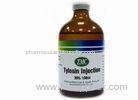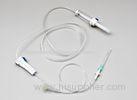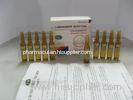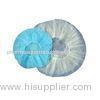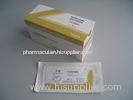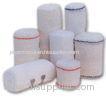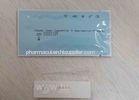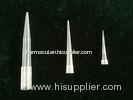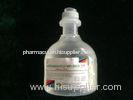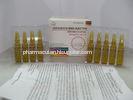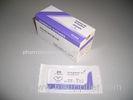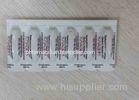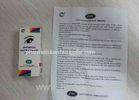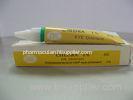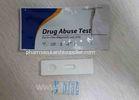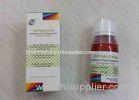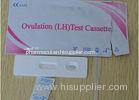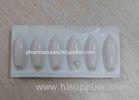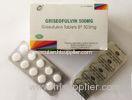|
ZHEJIANG MEDICINES&HEALTH PRODUCTS I/E CO.,LTD
|
BP Standard 50MG Anticancer Medicine Fludarabine Phosphate For Injection
| Place of Origin: | Guangdong, China (Mainland) |
|
|
|
| Add to My Favorites | |
| HiSupplier Escrow |
Product Detail
Fludarabine Phosphate For Injection 50MG Anticancer Me
Fludarabine Phosphate For Injection 50MG Anticancer Medicine
COMPOSITION:
Each vial contains 50 mg fludarabine phosphate as a lyophilised solid cake (equivalent to 39,05 mg fludarabine per vial).
PHARMACOLOGICAL ACTION:
Pharmacodynamic properties
Fludarabine phosphate, a fluorinated nucleotide analogue of the antiviral agent vidarabine, 9-beta-D-arabinofuranosyladenine (ara-A) that is relatively resistant to deamination by adenosine deaminase.
Fludarabine phosphate is rapidly dephosphorylated to 2-fluoro-ara-A which is taken up by cells and then phosphorylated intracellularly by deoxycytidine kinase to the active triphosphate, 2-fluoro-ara-ATP. This metabolite has been shown to inhibit ribonucleotide reductase, DNA polymerase alpha/delta and epsilon, DNA primase and DNA ligase thereby inhibiting DNA synthesis. Furthermore, partial inhibition of RNA polymerase II and consequent reduction in protein synthesis occurs.
While some aspects of the mechanism of action of 2-fluoro-ara-ATP are as yet unclear, it is assumed that effects on DNA, RNA and protein synthesis all contribute to inhibition of cell growth with inhibition of DNA synthesis being the dominant factor.
In addition, in vitro studies have shown that exposure of chronic lymphocytic leukaemia lymphocytes to 2F-ara-A triggers extensive DNA fragmentation and cell death characteristic of apoptosis.
Pharmacokinetic properties
Plasma and urinary pharmacokinetics of fludarabine (2F-ara-A)
The pharmacokinetics of fludarabine (2F-ara-A) has been studied after intravenous administration by rapid bolus injection, short-term infusion and following continuous infusion of fludarabine phosphate (Fludarabine, 2F-ara-AMP). 2F-ara-A demonstrated a similar pharmacokinetic profile in chronic lymphocytic leukaemia.
No clear correlation was found between 2F-ara-A pharmacokinetics and treatment efficacy in cancer patients. However, occurrence of neutropenia and hematocrit changes indicated that the cytotoxicity of fludarabine phosphate depresses hematopoiesis in a dose-dependent manner.
Distribution and metabolism
After single dose infusion of 25 mg 2F-ara-AMP per m² to chronic lymphocytic leukaemia patients for 30 minutes, 2F-ara-A reached mean maximum concentrations in the plasma of 3,5 to 3,7 microM at the end of the infusion. Corresponding 2F-ara-A levels after the fifth dose showed a moderate accumulation with mean maximum levels of 4,4 to 4,8 microM at the end of infusion. During a 5 day treatment schedule, 2F-ara-A plasma trough levels increased by a factor of about 2. An accumulation of 2F-ara-A over several treatment cycles can be excluded. Postmaximum levels decayed in three disposition phases with an initial half-life of approximately 5 minutes, an intermediate half-life of 1 to 2 hours and a terminal half-life of approximately 20 hours.
An interstudy comparison of 2F-ara-A pharmacokinetics resulted in a mean total plasma clearance (CL) of 79 mL/min/m² (2,2 mL/min/kg) and a mean volume of distribution (Vss) of 83 L/m² (2,4 L/kg). Data showed a high interindividual variability. After intravenous administration of fludarabine phosphate plasma levels of 2F-ara-A and areas under the plasma level time curves increased linearly with the dose, whereas half-lives, plasma clearance and volumes of distribution remained constant independent of the dose indicating a dose linear behaviour.
Elimination
2F-ara-A elimination is largely by renal excretion, 40 to 60% of the administered intravenous dose was excreted in the urine.
Characteristics in patients
Individuals with impaired renal function exhibited a reduced total body clearance, indicating the need for a dose reduction. In vitro investigations with human plasma proteins revealed no pronounced tendency of 2F-ara-A protein binding.
• Cellular pharmacokinetics of fludarabine triphosphate
2F-ara-A is actively transported into leukaemic cells, whereupon it is rephosphorylated to the monophosphate and subsequently to the di- and triphosphate. The triphosphate 2F-ara-ATP is the major intracellular metabolite and the only metabolite known to have cytotoxic activity. Maximum 2F-ara-ATP levels in leukaemic lymphocytes of chronic lymphocytic leukaemia patients were observed at a median of 4 hours and exhibited a considerable variation with a median peak concentration of approximately 20 microM, 2F-ara-ATP levels in leukaemic cells were always considerably higher than maximum 2F-ara-A levels in the plasma indicating an accumulation at the target sites. In vitro incubation of leukaemic lymphocytes showed a linear relationship between extracellular 2F-ara-A exposure (product of 2F-ara-A concentration and duration of incubation) and intracellular 2F-ara-ATP enrichment, 2F-ara-ATP elimination from target cells showed median half-life values of 15 and 23 hours.
INDICATIONS:
Fludarabine is indicated for the treatment of patients with B-cell chronic lymphocytic leukaemia who have not responded to or have not progressed during treatment with at least one standard alkylating-agent containing regimen.
CONTRA-INDICATIONS
Fludarabine is contra-indicated in those patients who are hypersensitive to fludarabine or its components and in renally impaired patients with creatinine clearance <30 mL/minute and in patients with haemolytic anaemia.
The safety and effectiveness of Fludarabine in children has not been established.
Pregnancy
Fludarabine should not be used during pregnancy.
Embryotoxicity studies in animals demonstrated an embryotoxic and/or teratogenic potential posing a relevant risk to humans at the envisaged therapeutic dose. Preclinical data in rats demonstrated a transfer of fludarabine phosphate and/or metabolites through the feto-placental barrier.
One case of fludarabine phosphate use during early pregnancy leading to skeletal and cardiac malformation in the newborn has been reported.
Women of childbearing potential should be advised to avoid becoming pregnant and to inform the treating physician immediately should this occur.
Lactation
It is not known whether this drug is excreted in human milk.
However, there is evidence from preclinical data that fludarabine phosphate and/or metabolites transfer from maternal blood to milk.
Therefore, breastfeeding should be discontinued for the duration of Fludarabine therapy.
DOSAGE AND DIRECTIONS FOR USE
General information
Reduced kidney function
Doses should be adjusted for patients with reduced kidney function. If creatinine clearance is between 30 and 70 mL/min, the dose should be reduced by up to 50% and close haematological monitoring should be used to assess toxicity. For further information see “Special precautions”. Fludarabine treatment is contra-indicated if creatinine clearance is <30 mL/min.
Fludarabine should be prepared for parenteral use by aseptically adding sterile water for injection.
When reconstituted with 2 mL of sterile water for injection, the solid cake should fully dissolve in 15 seconds or less.
Each m










